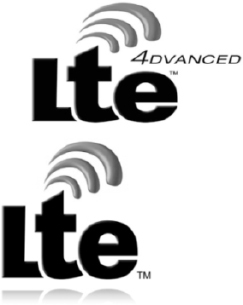Introduction
Long Term Evolution (LTE) is commonly marketed as fourth generation (4G). LTE and LTE Advanced have been recognized by International Telecommunications Union – Radiocommunications (ITU-R) and International Telecommunications Union – Telecommunications (ITU-T) as the principal solution for the future mobile communication networks standards. Thus, they are the framework of what marketing calls 4G and maybe also fifth generation (5G). They have registered logos:
Figure I.1. LTE and LTE Advanced logo

It seems interesting to look at the evolution of mobile communication systems from their appearance upto LTE. This move has obviously been driven by commercial motivations as well as by the extraordinary improvement of microelectronics, especially from the 1960s to the present day. Functionalities, computing power and miniaturization have drastically progressed, while cost has constantly decreased.
I.1. Mobile communication systems: 0G, 1G, 2G, 3G, 4G and 5G
In this short introduction, many mobile communication systems will be omitted:
It does not mean that LTE will not have specific adaptations in order to fit the special requirements of such systems, especially for its radio interface, ...
Get LTE Standards now with the O’Reilly learning platform.
O’Reilly members experience books, live events, courses curated by job role, and more from O’Reilly and nearly 200 top publishers.

